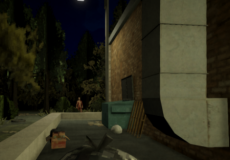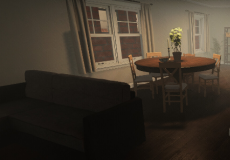

HELLMART
Advertisement
Hellmart begins with a simple premise: the player takes on the role of a store clerk working the late shift in a remote, self-service market. At first, the focus lies on maintaining operations—keeping the shelves stocked, handling customers, and ensuring that the shop remains functional. The structure of the game emphasizes process and repetition, but beneath this routine lies an unpredictable element that changes the meaning of every action once night arrives.
Advertisement
Similiar games
Hellmart begins with a simple premise: the player takes on the role of a store clerk working the late shift in a remote, self-service market. At first, the focus lies on maintaining operations—keeping the shelves stocked, handling customers, and ensuring that the shop remains functional. The structure of the game emphasizes process and repetition, but beneath this routine lies an unpredictable element that changes the meaning of every action once night arrives.
Routine And Preparation
During the day, Hellmart trains the player to manage order. Tasks such as inventory control, cleaning, and financial tracking form the base of the gameplay. Each choice contributes to stability, determining how the environment behaves later. The player’s main advantage is awareness: predicting what might fail and preparing in advance. As evening approaches, systems begin to shift, demanding that every stored item and secured door be accounted for before the darker phase begins.
System Of Progression
The gameplay loop in Hellmart operates through a series of cause-and-effect actions:
· Complete daily store objectives efficiently
· Monitor inventory and customer activity
· Prepare emergency systems such as lights and power
· Manage time and prioritize resources
· React to environmental changes during the night
This structure ties management and survival into a continuous sequence, where what happens in daylight determines the safety of the next cycle.
Night Shift And Pressure
When night begins, the same workspace becomes unpredictable. Power systems fluctuate, customer patterns distort, and security demands constant attention. Small errors from earlier shifts appear as direct consequences. The game’s tension develops from logical processes failing under stress. The player must rely on observation and discipline to maintain control. Every movement, from refilling a shelf to checking a monitor, carries a practical risk.
Interpretation And Design Goal
Hellmart focuses on control within constraint. It transforms ordinary labor into a structure of endurance, where repetition conceals instability. The design highlights preparation, reasoning, and adaptation, showing how organization can serve as both shield and weakness. Instead of relying on spectacle, the experience builds meaning through structure—the test of whether consistent logic can hold when the system it supports begins to collapse.
Discuss HELLMART




















